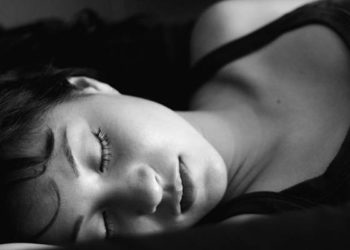Medical use of prescription opioids linked to nonmedical use in adolescents
1. Adolescents who initiated nonmedical use of prescription opioids more commonly had previous medical use of prescriptions opioids rather than no exposure.
2. Correlation between medical and nonmedical use of prescription opioids was stronger in males compared to females.
Evidence Rating: 2 (Good)
Study Rundown: The abuse and diversion of opioid medications in the United States has increased substantially within the past 2 decades. As a result, there has been an increase in opioid-related prescription use disorders, emergency department visits, and overdose deaths. These trends primarily reflect data from adult studies. Existing literature on the nonmedical use of prescription opioids (NUPO) is limited to regional data analysis and single time point analysis. In this study, researchers utilized national data to evaluate trends and correlations in the medical use of prescription opioids (MUPO) and NUPO in high school seniors between 1976 to 2015. Their data showed that MUPO peaked in 1989 and 2002, with a recent decline from 2013 through 2015. The most common trend in usage was simply MUPO without a history of NUPO. In respondents with NUPO, the most common trend was a previous exposure to MUPO. Additionally, a significant correlation was found between MUPO and NUPO in both males and females, with a more robust correlation in males. Limitations of this study include recall bias, lack of data on age of onset, dose, and duration, and pain condition. Overall, this study sheds light on the trends in NUPO that may prompt further studies and practice guidelines that aim to prevent opioid misuse in adolescents.
Click to read the study, published today in Pediatrics
Relevant Reading: Trends in opioid analgesic abuse and mortality in the United States
In-Depth [cross-sectional study]: In this study, researchers evaluated data from the Monitoring the Future (MTF) study, a cross-sectional study of self-administered surveys of a nationally representative sample of U.S. high school seniors, including 40 cohorts between 1976-2015. The estimate lifetime prevalence of MUPO peaked in 1989 at 20.4% (SE=1.1) and later again in 2002 at 20.0% (SE=1.3). There was a moderate, positive relationship between MUPO and NUPO (r=0.50, P<0.01). By gender, the correlation between MUPO and NUPO was stronger for males (r=0.67, P<0.001) than females (r=0.34, P<0.05). By race, while the prevalence of both MUPO and NUPO was higher in white compared to black adolescents, the Pearson correlation between MUPO and NUPO was robust for both black (r=0.79, P<0.001) and white adolescents (r=0.65, P<0.001). In terms of overall trends in lifetime MUPO and NUPO, the most common pattern was MUPO without a history of NUPO, with a range of 8.5% (SE=0.9) in 2000 to 14.4% (SE=0.8) in 1989. In respondents with both MUPO and NUPO, the most common pattern was MUPO before initiating NUPO, with a range of 2.6% (SE=0.2) in 1979 to 5.4% (SE=0.6) in 1990.
Image: CC
©2017 2 Minute Medicine, Inc. All rights reserved. No works may be reproduced without expressed written consent from 2 Minute Medicine, Inc. Inquire about licensing here. No article should be construed as medical advice and is not intended as such by the authors or by 2 Minute Medicine, Inc.







